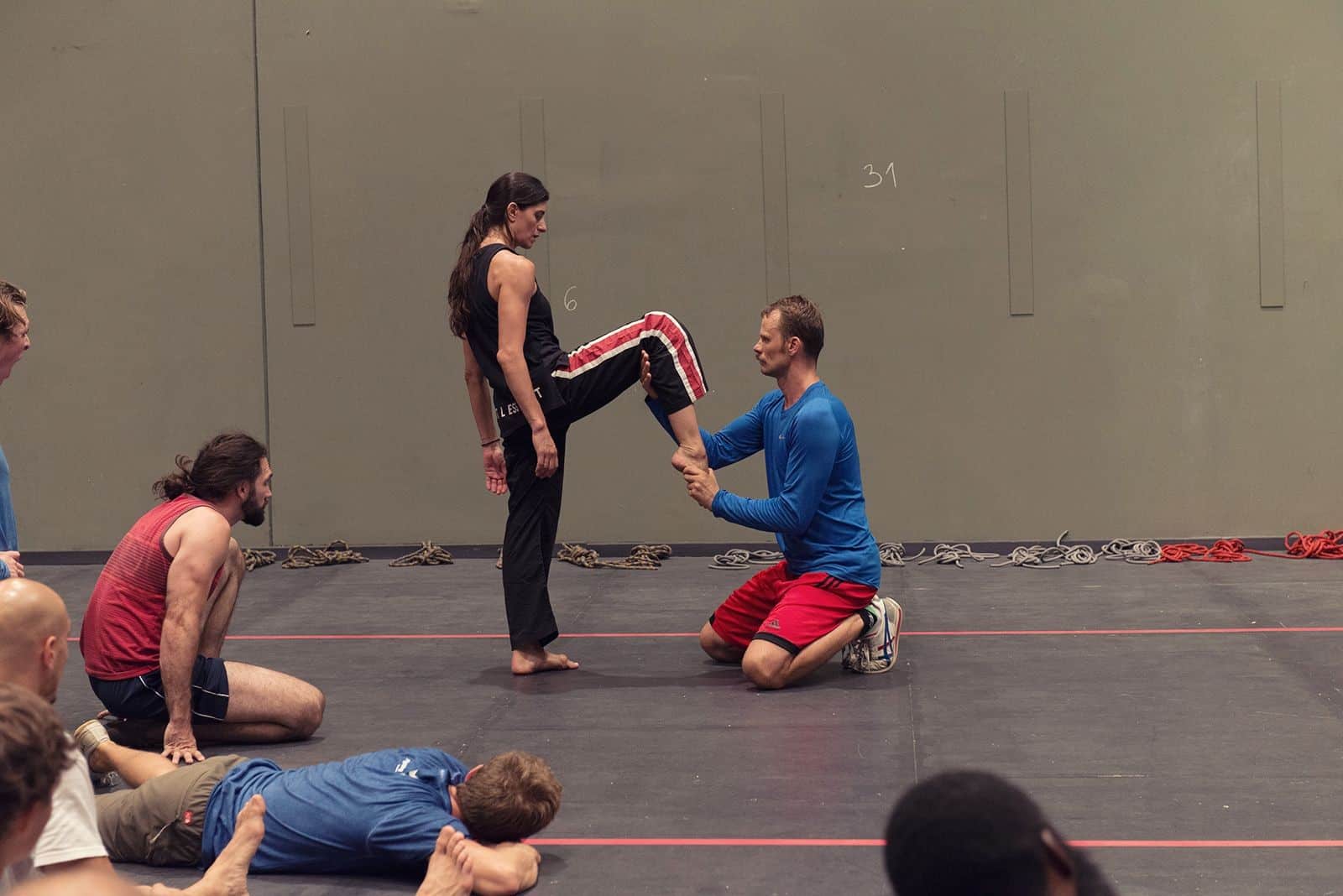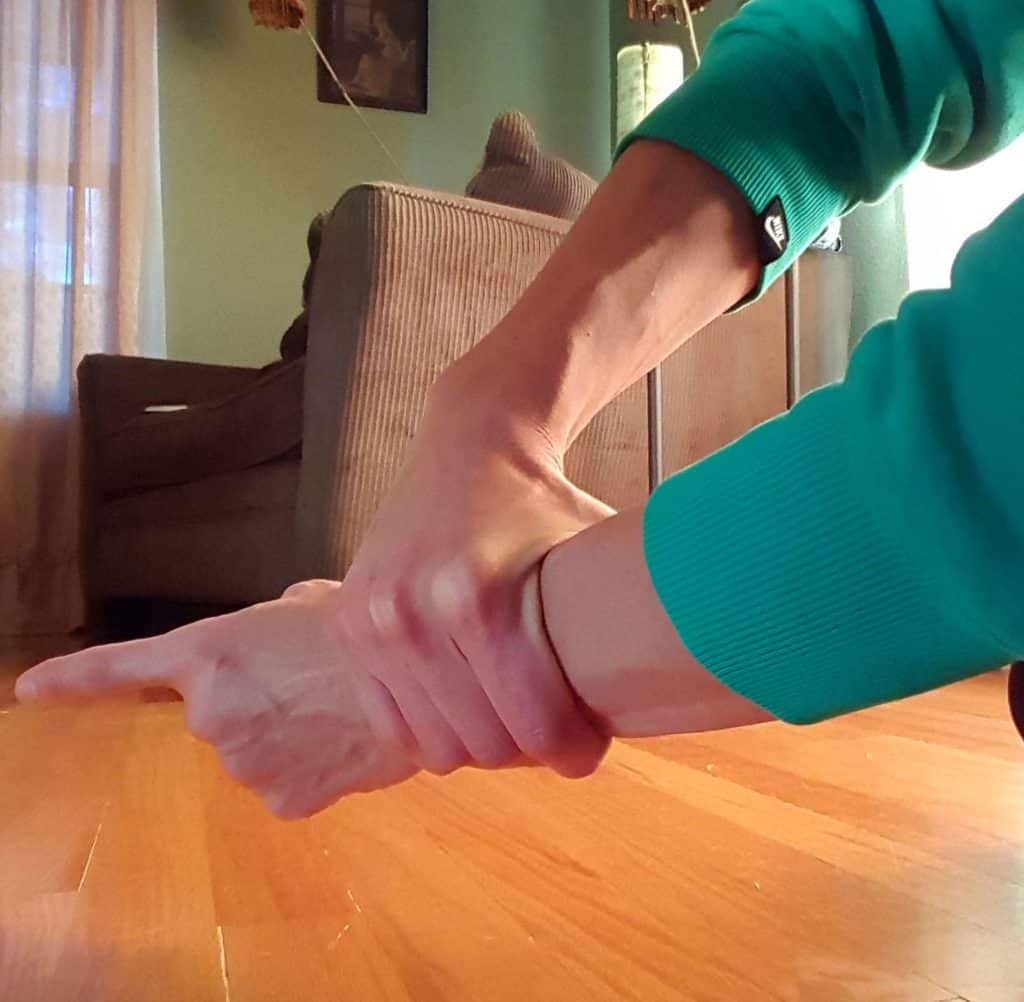
The World of Fighting Monkey (part 1)
Doing without knowing. Playing, creating, learning. Adjusting and adapting. Describing Fighting Monkey is an act in organizing verbs. Everything overlaps and intertwines and is a wonder. The only certainty you are left with is that you have experienced something good and and provocative. Personified as one of their videos, those who enter their world exit intrigued, excited, and wanting more.
There are no certifications for Fighting Monkey, no lectures or prerequisites. Without a syllabus or agenda to set expectations or schedules, there is nothing to check off or mark time by. Eager and available, with minimal rules and guidance, only possibility exists. A concept is demonstrated and you are given the task of developing a contextual truth:
I have a hunch the opening and closing flow charts are from Jozef’s personal research journal.
The essence of Fighting Monkey is to use a tool or a partner (or both) to create a situation where the participants are forced interact and learn.
Learning is dependent on feedback and communication. The tool or partner is an entity to engage and experiment with. The opposition or object of intrigue lies on a spectrum of simple to complex. A complicated opponent offers challenge through uncomplicated games, while an inanimate object requires imaginative assignment to make it stimulating. Because a thinking, strategizing human being is the most complex of instruments to play with, the objects chosen to manipulate are deceptively simple: a tennis ball connected to string, tiny wooden blocks, and a heavy wooden sphere.
Like natural movement, the course work spirals in and out of selected elements. The students are given the charge of scaling and determining progressions and regressions. As soon as you figure out a symbiotic relationship, you’re off to collaborate with someone new. With no chance to conform or celebrate a particular pattern, students are kept on their toes (often literally), well away from coasting in a position of comfort.
We began each six hour session with about an hour of group warm up. Standing practice flowed into balancing and acts of stillness. There were martial arts inspired extension sequences, wide stand squats and lunges. Joint preparation was much more integration than isolation.
The key to balance and coordination is to make it effortless and smooth.
These followed a rooted foot version with a slightly different intent.
PRACTICE BALL
The famed tool can be made in under 60 seconds, but can be difficult to implement without a guiding framework. The key to success is utilizing the eyes:
1. Focusing vision near and far: partner holds two balls in a line, one close to the observer’s face and one at a distance. He or she asks the onlooker to zero in on one ball, and then the other, on command.
2. Eyes follow, head stays: ball hovers in linear and random patterns in front of the observer’s face. Without moving the head or neck, the eyes move to track the trajectory of the ball.
3. Keep eyes on the ball, feet grounded, avoid the ball touching you. Feet stay planted in place but can turn/ pivot to find ball. Wide stance to start. Be soft instead of stiff. Move only what needs to be moved – minimum possible effort.
4. Squatting practice. Wide stance becomes more regular. Ball takes a more vertical path and lowers observer to ground. Stay low and react.
5. Feet together ball avoidance. Building on 3 and 4, foot position dictates new limitations and possibilities. Keep going after their head to try and take them off their narrow base.
6. Lying hollow. With only your butt touching the floor, make your legs flirt with the ball. As they tire, go after the upper half of the body.
7. Standing to lying. Ball attempts to stay eye level, and partner lures you on and off the ground by raising and lowering the ball. The idea of being lead by your partner comes into full play here. Their purpose is to direct and examine in real time.
PARTNER GAMES
We interlaced fingers and learned to push and pull. Should we keep our feet or move them? Stay rigid or soft? Was faster better than slow? Again and again we changed our minds and sifted through options. This was the first game we played on day one and one of the last we played on day two. It was one of the only things we repeated to note our progress and efficiency.
Linked grappling turned into aggressive hugging. The object was to wrap your arms around your partners waist. Attackers and defenders were designated at first, and then pairs decided whether to make their roles more ambiguous. I did not notice any of the boys going easy on me because I was a girl. I was glad for this and my rugby background.
These first two games were full body and required lots of energy. The third (possibly acting as a brief respite) targeted the hands, wrists, and forearms. We were to open a clenched fist and unravel the fingers. With novice playmates like myself, we took the directions literally. Using one or two hands, we tried to wriggle our way past the locked thumb and separate the digits from the palm. The more assistance we gave ourself, the more successful we were. When I teamed with a veteran monkey, however, he quickly asked me to surrender to him. I obliged and he took two of my fingers and gently pulled and twisted them apart. He was testing what they were capable of, and I was finding out. Moments later I returned the favor and mimicked his method, determining his limitations.
Soon, however, our recoiled fingers became aggressive weapons. In finger touch, one partner points with their index finger while the other grabs their wrist:
Imagine that the grabbing hand belonged to a different body.
Using your grip to deflect, distract, and detain, the index finger seeks to touch any part of the defenders body. Still slick from sweat, the game of angles became one of purposing rotation. Moving the feet was allowed as necessary, but breaking away from your opponent was frowned upon. As with any intentional interaction, the goal is not to disengage but to connect and learn from one another.
All of these games were created by willing participants and curious minds. They were born out of a desire to simultaneously test and train and perform, and to put the human(s) in the arena at the forefront. The brain is not left out or shunted. It is invited and asked, What do you think?, acting its response without wavering. Fighting Monkey is the process of beings evolving, returning playful imagination to the journey of self-improvement.
Part Two of this series will attempt to unravel the mental side of Jozef and Linda’s research.




